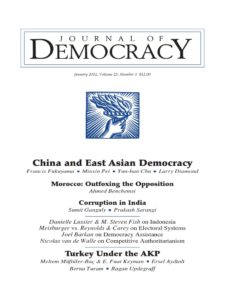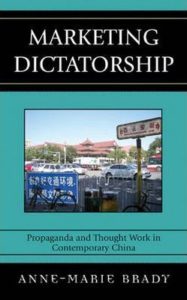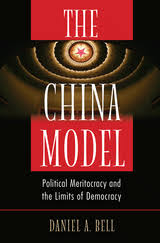8 de dezembro de 2018
Este é daqueles livros que mereceriam a atribuição de um critério especial de avaliação. Creio que a possibilidade de conferir “seis estrelas” seria um ótimo símbolo para representar a maravilhosa experiência proporcionada por este livro.
De início, o texto muito bem escrito por Paulo Roberto de Almeida (organizador) reflete bem as ideias de Roberto Campos e traduz, com base também nos textos disponíveis na obra, as críticas que seriam (foram) feitas a diversas condições normativas e alterações políticas que marcaram a edificação a aplicação das normas presentes no Texto Supremo.
Por qualquer dos extremos que se possa olhar em torno dos críticos e teóricos do constitucionalismo – represento os extremos por Burke e Lassalle, por exemplo – é possível enxergar o acerto daqueles que afirmam que o grande problema das constituições é a produção de um texto que não reflete e não se ampara no contexto. Um descolamento entre a constituição escrita e a realidade posta. Uma oportunidade para alguns preservarem interesses em detrimento das liberdades individuais.
Se este livro fosse intitulado como “A Constituição que não é (era) para o Brasil” também reproduziria bem o conteúdo dos brilhantes escritos de Roberto Campos. Mas, entendo que a escolha do título foi oportuna diante das críticas direcionadas a todos os fatos e acordos políticos que conjugaram esforços para a elaboração da Constituição de 1988.
Este livro é uma oportunidade para conhecer as raízes sociais, econômicas e políticas do Brasil daquele período, e reconhecer críticas de um autor que definitivamente não abraça teses acadêmicas em vigor ou ideias que são tradicionalmente defendidas e propagadas pelos “especialistas”.
Especialmente os textos finais apresentam os maiores debates em torno de questões econômicas relevantes e daquilo que se poderia conceber como a liberdade preservada na ordem constitucional de 1988. As críticas elaboradas na época permanecem atuais, dados os efeitos (ou ausência de mudanças significativas) que podemos perceber após três décadas de vigência da chamada Carta Cidadã.
Se alguém tiver acesso ao livro e quiser compreender a qualidade – ter um verdadeiro incentivo para ler o livro inteiro – e o tom das críticas elaboradas – e bem-humoradas – de Roberto Campos recomendo logo de início a leitura do texto 46 do livro “Besteira preventiva”. A sensação de que nós brasileiros estamos carentes de críticos mais profundos e intensos na atual imprensa será generalizada. Desafio o leitor do livro que não concluir a leitura com esta percepção!
Adquiri praticamente todos os livros lançados pela LVM em 2018. Ainda não conclui as leituras de “Rumo a uma sociedade libertária” de Walter Block e “A bela anarquia” de Jeffrey Tucker. Mesmo assim, creio que seja pela qualidade em todos os sentidos do livro, e da indiscutível clareza e pertinência dos textos de Roberto Campos reunidos nessa obra, tenho certeza de que este é o grande lançamento da LVM neste ano.
17 pessoas acharam isso útil
18 de fevereiro de 2019
O título se deve primeiro ao fato de que ao ler este livro percebe-se que o Brasil perdeu uma oportunidade de ouro de se tornar moderno em 1987-8; o segundo sentido é que ao lermos os ensaios de Roberto Campos podemos ver o que há de errado em nossa atual Constituição e buscar meios de desfazer tais erros. As análises que mais gostei da obra foram as que trataram da informática, da exploração de petróleo e minérios e o fato dos 3 poderes invadirem uns aos outros. É triste perceber que coisas como voto distrital e investimento estatal prioritário na educação básica já eram propugnados por Roberto Campos nos últimos decênios do século passado, mas só agora voltam a aparecer na boca de certos políticos. Trata-se de uma obra que deve ser divulgada ao máximo para que as pessoas percebam os motivos de nosso país ser um gigante com pés de barro.
24 de janeiro de 2019
O ambiente jurídico brasileiro necessita, urgentemente, de mais publicações do tipo. Como estudante de direito, sinto falta de mais obras com a cosmovisão apresentada nos ensaios do Roberto Campos que sejam direcionadas à seara jurídica. Não à toa que os nossos juristas são, em maioria, estatistas declarados ou inconscientes. Carregam a mesma mentalidade - ou pior - dos nossos constituintes. Isso é preocupante, pois a situação do Brasil pede mais prudência e um consequente distanciamento dos nossos "progressistas retrógrados". Creio que nossa história ratificou o dizer do Roberto: que "a proposta das esquerdas brasileiras é comer a semente destinada ao plantio". Ah... a ironia e o sarcasmo são figuras de linguagem presentes em todos estes ensaios reunidos!
Em suma, necessitávamos de uma obra que descrevesse o verdadeiro ambiente promiscuo que deu luz à nossa constituição, retirando aquele ar, artificialmente construído em torno da sua promulgação.
Em relação ao acabamento do livro, é bonito, mas a qualidade é questionável, pois em 01 semana de leitura a lombada descolou por completo, conforme a foto. Os ensaios reunidos neste livro merecem um acabamento de maior qualidade!
2 de janeiro de 2019
O livro foi lançado num momento oportuno, no qual vemos um maior interesse da sociedade pela política, sobretudo econômica. Impossível lê-lo e não refletir com olhar crítico sobre o formato e função da nossa constituição, independente da preferência política que o leitor tenha, claro que se deve levar em conta a visão liberal do autor. Além disso, temos a oportunidade de contato com o notável estilo textual de Roberto Campos, um dos patriarcas do liberalismo no Brasil.

 “The most important cause of their pessimism is bad policy and bad leadership,” said Minxin Pei, a professor at Claremont McKenna College [and contributor to the NED’s
“The most important cause of their pessimism is bad policy and bad leadership,” said Minxin Pei, a professor at Claremont McKenna College [and contributor to the NED’s There is
There is  The group seems to have “all the hallmarks” of a front organization to further Beijing’s interests,
The group seems to have “all the hallmarks” of a front organization to further Beijing’s interests, Increasing Chinese leadership in the Middle East is served by a
Increasing Chinese leadership in the Middle East is served by a 